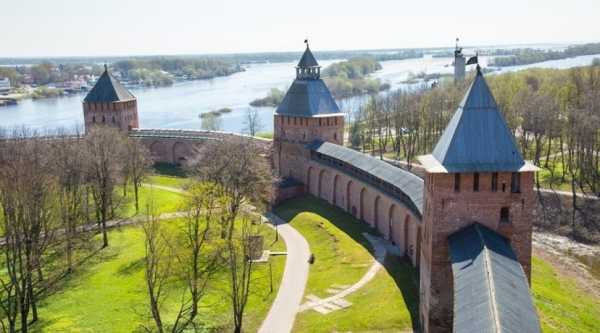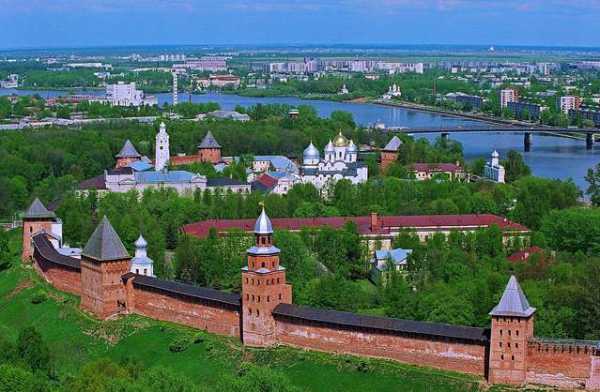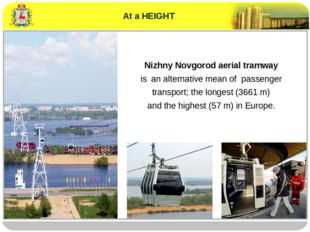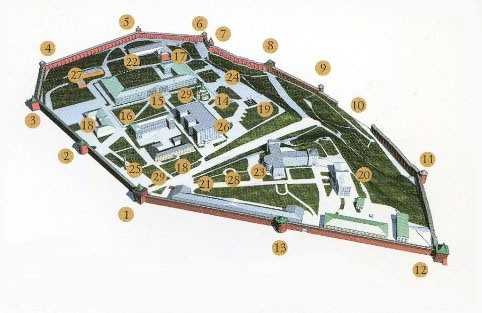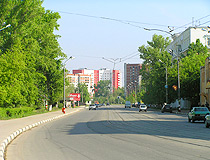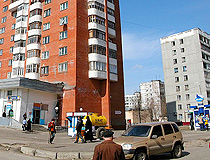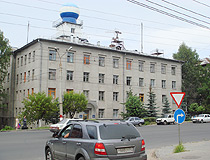Тема Нижний Новгород на английском языке: достопримечательности, рассказ о городе
Нижний Новгород — город множества достопримечательностей.
Nizhny Novgorod Kremlin – Нижегородский Кремль
- The center and the heart of the city – центр и сердце города
- The city authorities – городская власть
- The region governor administration – администрация губернатора области
- The legislation authorities – законодательная власть
The Kremlin is the center and the heart of the city. It’s the place where the history of Nizhny Novgorod started.Nizhny Novgorod Kremlin includes 5 square towers with the gates and 8 round ones.The city authorities, the region governor administration and the legislation authorities are situated inside the Kremlin walls. Moreover, there are religion and cultural sights such as Mikhaylo-Arkhangelsky Cathedral, Eternal Flame and museums.
Nizhny Novgorod Fair– Нижегородская ярмарка
- Famous exhibition center – известный выставочный центр
- Market place – ярмарочное место
- Superb modern exhibition complex – превосходный современный выставочный комплекс
Founded ages ago now Nizhny Novgorod Fair is both a great historical and architectural tourist attraction and a famous exhibition center.Nizhny Novgorod Fair has a great history. Actually it was a market place but after renovating the fair has become a superb modern exhibition complex that now welcomes different international events, fairs, and conventions.
Nizhny Novgorod State Art Museum Rukavishnikov Mansion– Нижегородский государственный художественный музей
- The City Art and Historical Museum – городской художественный и исторический музей
- Gain a great history – обрести великую историю
- Diverse and rich collection of paintings – разнообразная и богатая коллекция картин
- Masterpieces — шедевры
The Nizhny Novgorod State Art Museum is one of the oldest museums in Russia. Being founded in 1896 as «The City Art and Historical Museum» it has gained a great history and now has got a diverse and rich collection of paintings of different trend and genre. There are masterpieces both of Russian and European painters.
Rukavishnikov Mansion – Усадьба Рукавишниковых
- This exhibition space – выставочное пространство
- Mansion — усадьба
- Illustrious interior – знаменитый ресторан
This exhibition space is located inside a 19th-century mansion once belonging to the Rukavishnikov merchant family. There you can wander through the rooms on your own or join one of the hourly 40-minute excursions in Russian and English. Furniture and the interior are illustrious.
Chkalov Staircase – Чкаловская лестница
- A monumental erection of the Soviet era — монументальное сооружение советской эпохи
- Derive its name – получить свое название
- At the top of the stairs — в верхней части лестницы
- An immense sum — огромные деньги
- The river embankment — набережная реки
- Flight of stairs – лестничный пролет
The Chkalov Staircase is a great and monumental erection built in the Soviet era. The construction of the staircase cost an immense sum at the time – almost 8 million rubles and was built by German prisoners of the war. The staircase derives its name from pilot Valery Chkalov. He was the first man who flew from Moscow to Vancouver through the North Pole in 1937. There is a monument to Chkalov at the top of the stairs. Staircase numbers at about 1,500 stairs that connect the river embankment with the city center.
Подписывайтесь на бесплатный курс английского языка по e-mail.Тематические топики, видео и советы по обучению. Учите язык удобно.
150slov.com
Рассказ о Новгороде на английском (тема, топик с переводом)
Novgorod is one of the ancient cities in Russian Federation. There is a great number of monuments, museums and other places of interest on the territory of Novgorod. Novgorod was founded in 859 AD on the Volkhov River not far from the Ilmen Lake. It is considered that the history of Russian statehood has begun from this place. The city history is closely connected with the main periods of development and life of Russia. In 862 this city became the first capital of Rus but later the capital was moved to Kiev by Vladimir the Great. In those days Novgorod was playing a key role in expanding of culture and literacy in Russia. Almost all citizens of the city were educated. Novgorod was not only a cultural center but it was also a reliable fortress protecting Russian borders. During Tatar and Mongol invasion Novgorod didn’t suffer thereby it kept its unique ancient Russian architecture which is now attracting tourists from all over the world.
In the 21th century Novgorod is an important port and railway hub. The city has modern infrastructure: hotels, schools, universities, restaurants, parks and shopping malls. There is an airport in the city. The city is attractive for the tourists who would like to visit monuments of ancient Russia. It is famous for its Kremlin, Monument devoted to Millennium of Russia, orthodox churches, archaeological sites.
The Kremlin was first mentioned in the chronicle in 1044. It is situated on the hill over the Volkhov River. At first the Kremlin was wooden and it has burnt down several times. The Kremlin was built of stone in 1430. There are 3 churches and 9 towers within the Kremlin.
Construction of Saint Sophia’s cathedral started in 1045 on the Kremlin territory. The Cathedral was constructed in the byzantine style and had 6 domes. Nowadays it is the main Orthodox Church in Novgorod.
Millennium of Russia monument was built in the city in 1862. It represents a giant bell with the bas-reliefs showing various details of Russian history. At the top of the monument there is a woman down on her knees representing Russia and an angel with a cross in his hand.
Nowadays population of Novgorod is equal to approximately 220 000 people. Chemical, food, wood-working, mechanical engineering, metal processing and electrical industries are successfully developed in Novgorod. The city is one of Russian touristic centres. They say that to know Russia one should visit Novgorod. Do visit it as soon as you have such a chance.
Перевод
Новгород является одним из древних городов в Российской Федерации. На территории находится большое количество памятников, музеев и других достопримечательностей. Город был основан около реки Волхов, рядом с озером Ильмень в 859 г. Считается, что с этого места началась история российского государства. История города связана с основными периодами развития и жизни России. В 862 году Новгород стал первой столицей Руси, которая позже была перенесена в Киев Владимиром Великим. В те времена Новгород играл огромную роль в распространении культуры и грамотности. Практически все население города было образованным. Он был не только культурным центром, но и надежной крепостью, защищавшей русские рубежи. Во время татаро-монгольского ига Новгород не пострадал от монгольского нашествия, тем самым сохранил уникальную древнерусскую архитектуру, которая привлекает туристов со всего мира.
В 21 веке Новгород является важным портом и железнодорожным узлом. Город обладает современной инфраструктурой: гостиницы, школы, университеты, рестораны, парки и торговые центры. В городе расположен аэропорт. Город привлекателен для туристов, которые желают познакомиться с памятниками Древней Руси. На территории Великого Новгорода размещён кремль, знаменитый памятник посвящённый Тысячелетию Руси, православные храмы, места археологических раскопок.
Кремль впервые упоминается в летописи в 1044 году. Он расположен на холме над рекой Волхов. Первоначально кремль был деревянным и горел несколько раз. Каменный кремль был построен в 1430 годах. В кремле есть 3 храма, 9 башен
В 1045 году началось возведение Софийского собора на территории кремля. Собор выполнен в византийском стиле и имеет 6 куполов. Он является главным православным храмом.
Памятник Тысячелетия Руси построен в Новгороде в 1862 году. Он представляет собой гигантский колокол с барельефами, отражающими разные фрагменты российской истории. На вершине монумента изображена коленопреклоненная женщина, олицетворяющая Россию и ангел с крестом в руке.
В настоящее время численность населения примерно равна 220 000 человек.
В Новгороде развивается химическая, пищевая, деревообрабатывающая, машиностроительная и металлообрабатывающая, электротехническая промышленность. Город является одним из туристических центров России.
Говорят, что для того, чтобы узнать Россию, нужно побывать в Новгороде. Обязательно сделайте это, как только у вас появится такая возможность.
Материал подготовлен нашими репетиторами английского по скайпу. Первый урок бесплатный в рамках 30 минут.
online-teacher.ru
Презентация по английскому языку «Nizhniy Novgorod»
Описание презентации по отдельным слайдам:
1 слайд 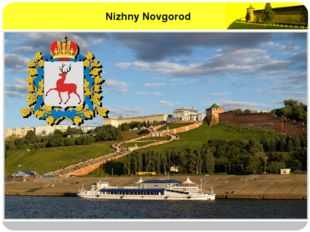
Nizhny Novgorod
2 слайд 
ABOUT THE CITY Nizhny Novgorod is one of the most beautiful and ancient Russian towns, beautifully located on Dyatlovy hills at the confluence of two big rivers, the Volga and the Oka. The Nizhny Novgorod of today is a big industrial, scientific and cultural center.
3 слайд 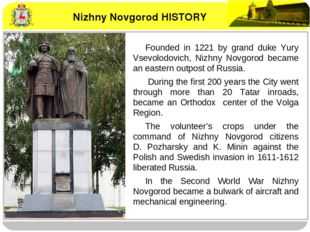
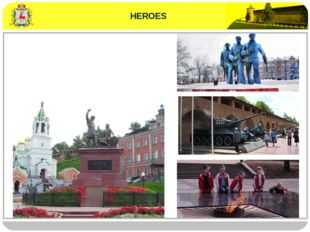 Описание слайда:
Описание слайда: HEROES
5 слайд 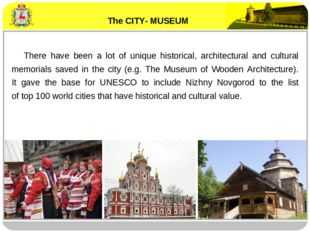
The CITY- MUSEUM There have been There have been a lot of unique historical, architectural and cultural memorials saved in the city (e.g. The Museum of Wooden Architecture). It gave the base for UNESCO to include Nizhny Novgorod to the list of top 100 world cities that have historical and cultural value.
6 слайд 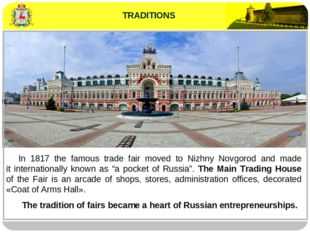
TRADITIONS In 1817 the famous trade fair moved to Nizhny Novgorod and made it internationally known as “a pocket of Russia”. The Main Trading House of the Fair is an arcade of shops, stores, administration offices, decorated «Coat of Arms Hall». The tradition of fairs became a heart of Russian entrepreneurships.
7 слайд 
CULTURE and ART There are many places to visit in Nizhny Novgorod: museums, exhibitions, concert halls, theaters, cinemas, parks, clubs and others.
8 слайд 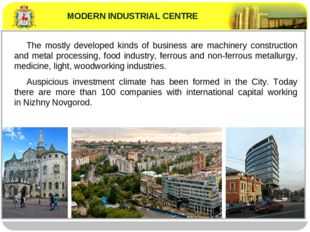
MODERN INDUSTRIAL CENTRE The mostly developed kinds of business are machinery construction and metal processing, food industry, ferrous and non-ferrous metallurgy, medicine, light, woodworking industries. Auspicious investment climate has been formed in the City. Today there are more than 100 companies with international capital working in Nizhny Novgorod.
9 слайд
At a HEIGHT Nizhny Novgorod aerial tramway is an alternative mean of passenger transport; the longest (3661 m) and the highest (57 m) in Europe.
Найдите материал к любому уроку,указав свой предмет (категорию), класс, учебник и тему:
Выберите категорию: Все категорииАлгебраАнглийский языкАстрономияБиологияВсемирная историяВсеобщая историяГеографияГеометрияДиректору, завучуДоп. образованиеДошкольное образованиеДругоеДругойЕстествознаниеИЗО, МХКИзобразительное искусствоИностранные языкиИнформатикаИскусствоИспанский языкИсторияИстория РоссииИстория Средних вековИтальянский языкКлассному руководителюКультурологияЛитератураЛитературное чтениеЛогопедияМатематикаМировая художественная культураМузыкаМХКНачальные классыНемецкий языкОБЖОбществознаниеОкружающий мирОсновы безопасности жизнедеятельностиПриродоведениеРелигиоведениеРисованиеРусский языкСоциальному педагогуТехнологияУкраинский языкФизикаФизическая культураФилософияФинский языкФранцузский языкХимияЧерчениеЧтениеШкольному психологуЭкология
Выберите класс: Все классыДошкольники1 класс2 класс3 класс4 класс5 класс6 класс7 класс8 класс9 класс10 класс11 класс
Выберите учебник: Все учебники
Выберите тему: Все темы
также Вы можете выбрать тип материала:
Общая информация
Номер материала: ДБ-260313
Похожие материалы
Оставьте свой комментарий
infourok.ru
Топик «My Native town Nizhny Novgorod» (материал для урока английского языка) — К уроку — Иностранные языки
My Native town Nizhny Novgorod
Everybody believes that his home town is an important place. Many interesting things can be said about Nizhny Novgorod its attractions and residents.
To begin with, Nizhny Novgorod is rather old. Over seven hundred years have passed since ancient tribes built a fortress on a high bank of the Oka River, where it joins the Volga. So, the city was founded in 1221, by Great Russian Prince Jury, a son of Vsevolod. Now it is one of the most beautiful Russian cities and a city of great national importance. It has a great population and is the third largest city in Russia.
Nizhny Novgorod has a rich history. In 1612 K. Minin and D. Pozharsky organized here people’s volunteer troops and made our Motherland free from Polish invaders. Nizhny Novgorod is the birthplace of Kulibin, a self-taught mechanical engineer, Lobachevsky, a mathematician, Melnikov-Pechorsky and M.Gorky, the writers. In 1932 the town was renamed Gorky, in honour and memory of the Great Russian writer, and in 1991 it got the name of Nizhny Novgorod again.
Nizhny Novgorod remembers Peter the great, Pushkin, Shevchenko, Chehov, Shalyapin, Saharov, who visited our city. In the past Nizhny Novgorod was an important commercial centre and the city of powerful merchant families. All Russian Trade Fair was held in Nizhny Novgorod for many years.
Nizhny Novgorod is well-known as a great industrial and transport centre of our country. There are many big factories in it. It is famous for the automobile plant and its cars. Shipbuilding is also developed in our city, a lot of ships for the Volga and other rivers are built here. In Nizhny Novgorod railroads, waterways and airlines meet. In 1985 a regular Metro traffic was added to this transport network.
My native town is a cultural and scientific centre as well. There are many theatres: the opera House, the Drama Theatre, the Puppet show, the Theatre of Young spectators, the Theatre of Comedy. You can also visit a lot of museums, the Art Gallery, cinemas and libraries.
The city is famous for its historical places. The most interesting are: Bolshaya Pokrovskaya Street with its beautiful buildings and the Kremlin with its ancient towers. A lot of gardens and parks make our city green and attractive. And the embankment of the Volga River is a fine place for a walk and a good rest.
My native town is beautiful in any season. I love it and I am proud to be its citizen.
pedsovet.su
Нижегородский кремль (на английском языке)
THE KREMLIN OF NIZHNY NOVGOROD
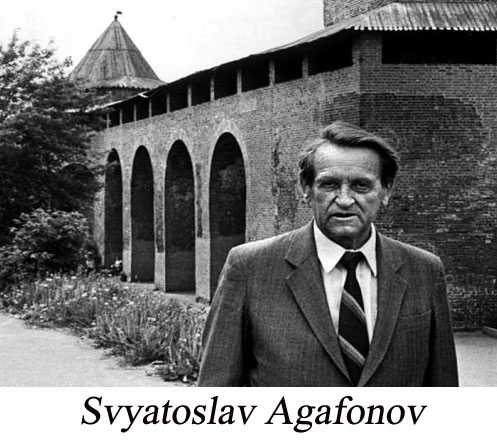
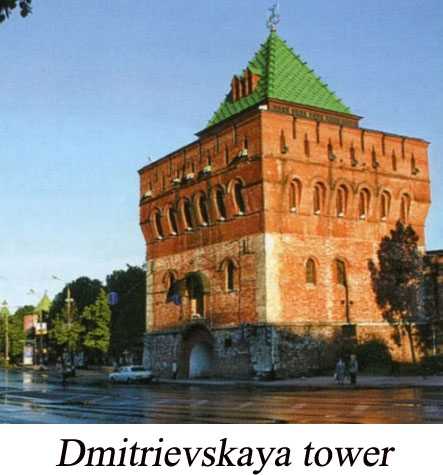
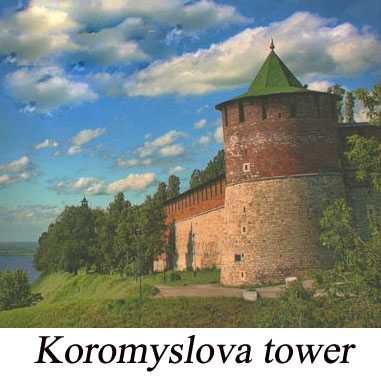
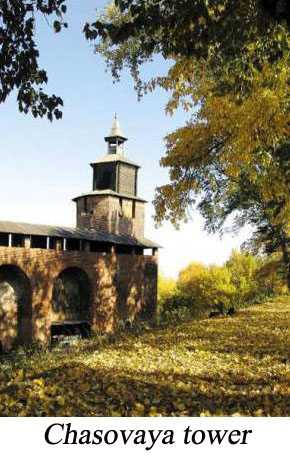
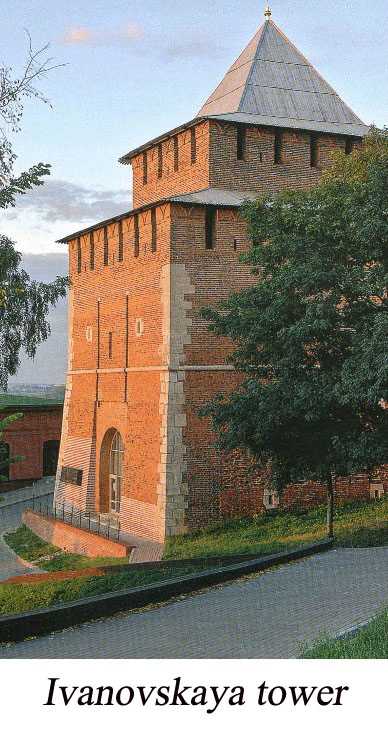
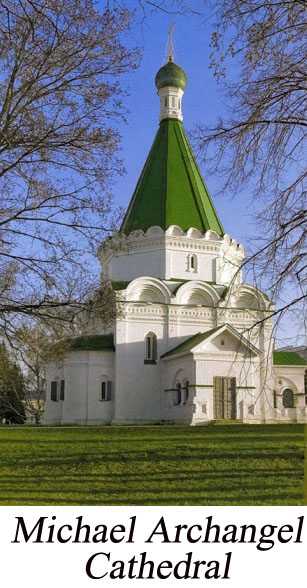
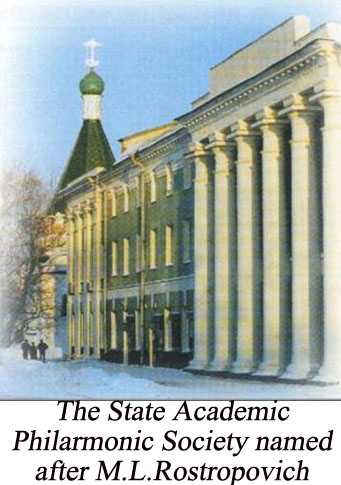
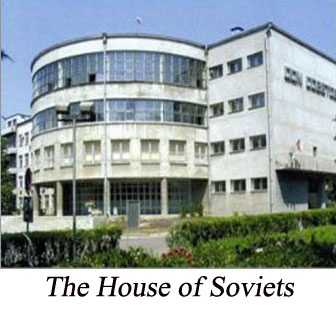
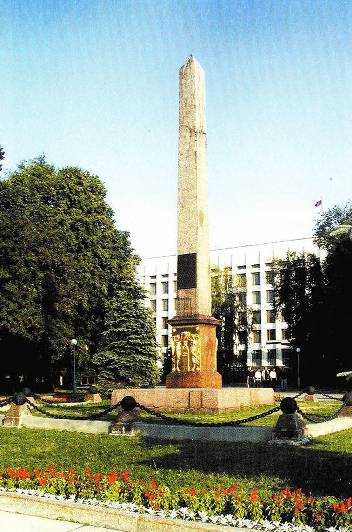
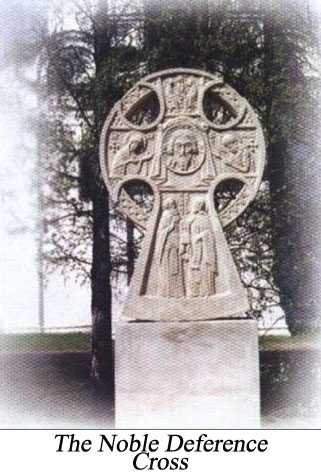
Towers: 1. Dmitrievskaya. 2. Kladovaya (Storage). 3. Nikolskaya. 4. Koromyslova (Yoke). 5. Tainitskaya (Secret). 6. Severnaya (North). 7. Chasovaya (Clock). 8. Ivanovskaya. 9. Belaya (White). 10. Zachatievskaya. 11. Borisoglebskaya. 12. Georgievskaya. 13. Porokhovaya (Gunpowder). 14. Archangel Cathedral. 15. A work-place’s building. (Cadet Corps). 16. The vice-governor’s houses. 17. The building of the Kremlin Police Unite. 18. The garnison baracks. 19. The obelisk in honour of Kozma Minin and Dmitry Pozharsky. 20. The palace of the military governor. 21. The building of the Arsenal. 22. The manege. 23. The House of Soviets. 24. The memorial complex. 25. The memorial «Gorkovites supporting the Army». 26. The seat of the regional committee of the C.P.S.U. 27. House of Goverment of Nizhny Novgorod region under construction. 28. The Noble Deference Cross. 29. The monument to the founder of Nizhny Novgorod, Prince Georgiy Vsevolodovich, and his spiritual mentor Saint Simon.
Назад
www.gorbibl.nnov.ru
Text 6 Nizhny Novgorod
Количество просмотров публикации Text 6 Nizhny Novgorod — 786
I. Read the letter and do the tasks following it.
Hi, Steve,
Here is the text about Nizhny Novgorod, my native place.
Nizhny Novgorod was founded in 1221. It is beautifully located on a number of hills, called the Dyatlov Hills in the name of the brigand, nicknamed Dyatel, who dominated the place in those days. The location offers a marvelous view from the river, which was noted in the past by high-ranking Russian and foreign guests, tsars, emperors, and also writers, historians and travellers. Actually, it is situated on 2 rivers – the Volga and the Oka. Its location is unique in that you can’t find anywhere else in Europe or in the world another city so highly placed at the confluence of two large rivers. It’s a pleasure to walk along the ancient Kremlin walls or along the embankments. In fact, these are my favourite walking routes. People with extrasensory abilities say that a walk along the Upper Volga embankment has a healing effect on the mind as well as on the body.
In the past, Nizhny Novgorod was famous for its world-known Fair which attracted Russians from all over the country, as well as foreigners from many parts of the world. It is Russia’s third largest city, formerly called “the pocket” and “the arsenal” of Russia. It played a crucial role in the salvation of the country from Polish invaders in the distant past and contributed greatly to the rout of the fascist Germany in World War II. A lot of tanks, airplanes, submarines and other armaments were manufactured at Gorky’s plants (after the October revolution Nizhny Novgorod was renamed in honour of the great proletarian writer Aleksey Peshkov, whose pen name was Maxim Gorky). It is known that Gorky was among the first Russian cities to be ruined completely by Hitler’s order in case Germany won a victory over Russia.
Nizhny Novgorod is a place of pilgrimage for lots of believers. It is known as the land of the great Russian saint, Serafim of Sarov, who is believed to be protecting the city and the whole of the country from disaster and ruin.
For me, Nizhny Novgorod is not just a great industrial, scientific and cultural centre neighbouring with the capital of the country. By modern standards, it is probably not the best place to live. Yet, I wouldn’t like to change it for any other place in the world.
I would be glad if you read my letter with interest.
I am looking forward to your answer.
With best wishes,
Alex.
II. Say if it is true or false.
1. Alex’s favourite walking route is the central street of the city.
2. At the time it was founded, Nizhny Novgorod was called Gorky.
3. Nizhny Novgorod is one of the largest cities of Russia.
4. Alex likes his city because it is a great scientific centre.
5. Nizhny Novgorod contributed greatly to the victory over fascism.
6. It played a decisive role in the rout of Polish and German invaders.
7. The city was earlier called “the pocket” and “the arsenal” of Russia.
III. Change the sentences using the words from the text.
Измените предложения, используя слова и выражения из текста.
1. After the revolution, Nizhny Novgorod was given the name of a famous Soviet writer.
2. Nizhny Novgorod is located on 2 large rivers.
3. A lot of armaments were produced at Gorky’s plants.
4. The monastery of Serafim of Sarov in Diveevo is often visited by believers.
5. In the past, Nizhny Novgorod was well-known for its popular Fair.
6. Nizhny Novgorod is not far from the capital of the country.
7. Alex wouldn’t like to live in any other city.
referatwork.ru
Составь рассказ «Мой родной город».. Желательно про Нижний…
Nizhny Novgorod is the fourth largest city in Russia, ranking after Moscow, St. Petersburg, and Novosibirsk. It is the economic and cultural center of the vast Volga-Vyatka economic region, and also the administrative center of Nizhny Novgorod Oblast and Volga Federal District. From 1932 to 1990, the city was known as Gorky after the writer Maxim Gorky who was born there. The city is an important economic, transport and cultural center of the Russian Federation. After the destruction of the Mordvin Inazor Obram administrative centre and fillfort named Obran Osh (Ashli) at the site of future stone Kremlin in 1220, a small Russian wooden hillfort was founded by Grand Duke Yuri II of Russia in 1221. Located at the confluence of two most important rivers of his principality, the Volga and the Oka, and Obran Osh was renamed Nizhny Novgorod. Its name literally means Lower Newtown, to distinguish it from the older Veliky Novgorod. Its independent existence was threatened by the continuous Mordvin attacks against it. The major attempt made by Inazor Purgaz from Arzamas in January 1229 was repulsed, but after the death of Yuri II on March 4, 1238 at the Battle of Sit River the Mongols occupied the fortress and the remnants of small Nizhny Novgorod settlement which surrendered without any resistance in order to preserve what had been developed since Purgazs attack eight years earlier. Later a major stronghold for border protection, Nizhny Novgorod fortress took advantage of a natural moat formed by the two rivers. Along with Moscow and Tver, Nizhny Novgorod was among several newly-founded towns that escaped Mongol devastation on account of their insignificance, but grew into (great) centers in vassalic Russian political life during the period of the Tatar Yoke. With the agreement of the Mongol Khan, Nizhny Novgorod was incorporated into the Vladimir — Suzdal Principality in 1264. After 86 years its importance further increased when the seat of the powerful Suzdal Principality was moved here from Gorodets in 1350. Grand Duke Dmitry Konstantinovich (1323–1383) sought to make his capital a rival worthy of Moscow; he built a stone citadel and several churches and was a patron of historians. The earliest extant manuscript of the Russian Primary Chronicle, the Laurentian Codex, was written for him by the local monk Laurentius in 1337. (Извини что такой длинный…)
Оцени ответ
napyaterku.com
Нижний Новгород
Нижний Новгород – большой город, город миллионик, а таких в нашей стране, к сожалению не так много. Нижний Новгород находится в 442 километрах от Москвы, его население составляет почти полтора миллиона человек. Город расположен возле рек Волга и Ока.
История Нижнего Новгорода берет свое начало в 1221 году. Основателем города считается владимиро-суздальский князь, внук Юрия Долгорукого Георгий II. Город стал крайней точкой Северо-Восточной Руси, возводился он как форпост, с целью защиты русской земли от мордвы и булгар, имел выгодное расположение. Волга и Ока сделали город важным торговым центром. Отсюда Русь вела торговлю с Волжской Булгарией.
Владмиро-Суздальский князь тратил огромные средства для обустройства города, поэтому он динамично развивался. Так, к 1240 году в городе появились первые каменные постройки – церкви Архангельская и Спасо – Преображенская. На Нижний Новгород частенько совершали набеги, но жители города были крепки и стойко переносили все невзгоды.
В 1350 году Нижний Новгород стал столицей Суздальско-Нижегородского княжества. Начинание это совершил князь Константин Васильевич. Спустя 27 лет город настиг большой пожар, при котором, к сожалению, сгорело 32 храма. Такое количество пострадавших храмов свидетельствует о том, что Нижний Новгород уже в это время был большим городом.
Во время Куликовской битвы полегло много Нижегородцев, бывших в составе войска Дмитрия Донского. Вскоре Нижний Новгород попал под влияния Московского княжества. Много раз он подвергался набегам войск Казанского ханства. В 1505 году произошел интересный случай. Под стенами кремля Н. Новгорода собралось 60.000 тысяч татарских воинов. А население города к тому моменту составляло около 4.000 человек. Долго длился штурм города. В Нижнем, к обороне города даже подключили пленных литовцев, обещав за участие в битве – свободу. Так вышло, что во время очередной татарской атаки, литовцы, стрелявшие из пушки, убили предводителя нагайского войска, которое вместе с татарами осадило город. В рядах неприятеля началась паника, и под станами кремля татары и ногайцы устроили великую сечу между собой. Так, вот противник и отступил.
Чем еще с исторической точки зрения знаменит Нижний Новгород? Во время смутного времени, усилиями Дмитрия Пожарского и Кузьмы Минина было сформировано второе ополчение, спасшее русскую государственность. Нижний Новгород является Родиной знаменитого конструктора Кулибина. В городе есть парк, названный в его честь, там же находится и мемориал знаменитого механика.
Обязательно, будучи в Нижнем Новгороде посетите Площадь Минина и Пожарского. Примечательно и здание истфака нижегородского университета. В Российской Империи эти здания принадлежали купцу Деулину, в стенах этих зданий бывал знаменитый поэт Пушкин.
Интерес в Нижнем Новгороде представляет и Большая Покровская улицы. Примечательно на ней здание банка, в конкурсе на создание которого, участвовало много известных архитекторов. По этой улице так же находится Музей Художественных промыслов и Музей фотографии. А на пересечении улицы с октябрьской, стоит здание Дворянского собрания. По улице Маяковского много интересных церквей. А гуляя по Ильинской улице, можно наблюдать богатые особняки.
Нижний Новгород Родина Максима Горького, поэтому, если Вы любите литературный талант русского писателя, то посетите – Литературный музей Горького, Музей квартиру Горького, Музей детства Горького. Думаете, достопримечательности на этом закончились? Нет! Обязательно посетите Художественный музей. Здесь представлены картины русских художников, особое внимание уделите полотнам Кустодиева. Музей находится в Кремле. Есть в городе и монастыри: Благовещенский мужской монастырь, Вознесенский Печерский мужской монастырь, огромное количество соборов и храмов.
Во времена Российской Империи Нижний Новгород был крупным промышленным центром. К концу 19 века в нем действовало более 50-ти крупных заводов и фабрик. Свой статус крупного промышленного города Нижний не утратил и по сей день. Сегодня здесь действую такие предприятия, как: «Газ», «Нижегородский маш и другие. Нижний Новгород, как город миллионик, является обладателем метро. Метро состоит из одной ветки, которая соединена с автовокзалом и железнодорожной станцией.
Нижний Новгород крупный город, в котором есть место и для туристов. Пообедать будет проще всего на Маяковской улице, там много кафешок и всяких забегаловок. Не должно в Нижнем Новгороде возникнуть и проблем с гостиницами. Гостинцы Нижнего Новгорода , на любой вкус и размер кошелька. Гостиница «Русский Капитал» находится на улице Минеева, номера дорогие. Есть гостиницы и попроще: «Ока» (Пр-кт Гагарина), «Заречный» (Пр-кт Ленина), «Волжский откос» (Верхне-Волжская набережная), «Волна» (Проспект Ленина).
Nizhny Novgorod Kremlin – Нижегородский Кремль
- The center and the heart of the city – центр и сердце города
- The city authorities – городская власть
- The region governor administration – администрация губернатора области
- The legislation authorities – законодательная власть
The Kremlin is the center and the heart of the city. It’s the place where the history of Nizhny Novgorod started. Nizhny Novgorod Kremlin includes 5 square towers with the gates and 8 round ones. The city authorities, the region governor administration and the legislation authorities are situated inside the Kremlin walls. Moreover, there are religion and cultural sights such as Mikhaylo-Arkhangelsky Cathedral, Eternal Flame and museums.
LiveInternetLiveInternet
Цитата сообщения сандро_пятый
Прочитать целикомВ свой цитатник или сообщество!
Кратко о Нижнем Новгороде
Нижний Новгород, центр Нижегородской области, в 439 км к востоку от Москвы. Город был основан у места слияния великих русских рек — Волги и Оки князем Юрием Георгием) Всеволодовичем в 1221 году как опорный пункт обороны русских границ от мордвы, черемисов и татар. Город получил название «Нижний» — возможно потому, что расположен был в «низовских» землях относительно Новгорода Великого, возможно, относительно уже существовавшего в четырех верстах вверх по Оке «старого городка», упоминание о котором сохранялось вплоть до начала 17 века. Население — 1311,2 тыс. чел. (по результатам Всероссийской переписи населения РФ 2002). Мужчин: 44,5%. Женщин: 55,5% . Первая дерево-земляная крепость заняла чрезвычайно выгодное в военно-стратегическом отношении место — господствующую над слиянием Оки с Волгой гору, прекрасно защищенную с одной стороны глубоким оврагом, с другой — со стороны Волги — крутыми обрывами-осыпями берега. В первые годы в кремле были отстроены 2 белокаменных храма — явное подтверждение того, что город явно претендовал на особую роль в системе земель Владимиро — Суздальской Руси, но монголо-татарское нашествие не дало этому сбыться. Сведения о Нижнем Новгороде 13 столетия крайне скудны. Но известно, что после разгрома он быстро возродился. На короткий отрезок времени в нем была установлена «вечевая республика» по типу Новгорода Великого. Месторасположение города и определило его дальнейшую судьбу. После окончания татарского ига Нижний Новгород постоянно упоминается в русских летописях, укрепляясь как крупный политический и экономический центр Северо-Восточной Руси, оставаясь духовным оплотом православия в Поволжье. В это время он нередко служил объектом конфликтов при дележе сфер влияния между набиравшими силу Москвой и Тверью. Была пора, когда Нижний был назван столицей великого княжества, которое просуществовало более полустолетия (1341-1392 гг.) и не уступало Москве и Твери в стремлении главенствовать над Русью. Семнадцать раз за историю города подступали к Нижнему враги и не единожды разоряли его, но город возрождался вновь и вновь. С конца XV века на многие десятилетия Нижний становится надежным оплотом Москвы в борьбе за великий речной путь. В это время в городе возводится каменный кремль, ставший выдающимся сооружением русского фортификационного искусства. Летом 1509 года в город прибыл зодчий-иноземец Петр Фрязин, а «сентября в 1 день заложиша Новаград Нижний и делаша стену каменную и стрельницу Дмитровскую». После «смуты» Нижегородское Поволжье получило в относительно мирных условиях жизни возможность быстро развивать сельское хозяйство, промышленность, торговлю и культуру. В это время Нижегородчина во многом определяла уровень торгово-промышленного и художественного развития всей страны. Здесь складывается и действует крупнейшая в стране Макарьевская ярмарка, зарождается старообрядческое движение, вожди-идеологи которого (Аввакум Петров, Стефан Внифантьев, Павел Коломенский) и их непримиримые противники (патриарх Никон, митрополит Рязанский и Муромский Иларион) были нижегородцами. В 1672 году в Нижнем Новгороде была учреждена митрополия. Со взятием Иваном Грозным Казани (в 1552 г.), а затем и Астрахани Нижний Новгород сделался центром, через который шла вся торговля Русского государства с Востоком. В 17 веке Нижний Новгород был центром массовых формирований судовых караванов, найма на них сотен тысяч работных. Соль, рыба и восточные товары с приходивших с Астрахани кораблей здесь перегружались на суда меньшей осадки, поднимавшиеся далее в верховья Оки и Волги. Уже тогда Нижний Новгород стал крупным центром судостроения. На XVIII век приходится возвышение Нижнего Новгорода как административного центра. С 1714 года город стал губернским, а с 1779 по 1796 год — центром Нижегородского наместничества, включавшего в себя в разное время Вятскую, Костромскую, Пензенскую губернии и Алатырскую провинцию. Превращение Нижнего Новгорода в «столицу» значительного региона России благотворно сказалось на развитии всех сторон жизни города: промышленности, торговли, просвещения, медицины, культуры, науки и градостроительства. С начала 30-х гг. 20 века город стал носить имя пролетарского писателя А.М. Горького. После революции начинается этап активного индустриального роста города. Горьковский автомобильный завод был построен за 17 месяцев и введен в строй действующих 1 января 1932 года. Дороги страны наводнили грузовые автомобили ГАЗ-АА, легковые ГАЗ-А, М-1., после Великой Отечественной войны — ГАЗ-51, ГАЗ-63, ГАЗ-66, «Победа», «Волга». Почти одновременно с автозаводом в Горьком началось строительство и ряда других крупных промышленных предприятий, например, завод фрезерных станков. После гражданской войны Сормовский завод, основанный еще в 1849 году как судостроительный, значительно расширил производство. Кроме паровозов, вагонов, сормовичи стали выпускать речные и морские суда, мощные дизели. В 50-х годах сормовские конструкторы под руководством Р.Е. Алексеева создали принципиально новые типы речных и морских судов «Ракета» и «Метеор». Современный Нижний Новгород — крупнейший в России центр машиностроения (70% промышленной продукции). Университет, технический университет. Консерватория. Институты: инженеров овдного транспорта, арархитектурно-строительный, сельскохозяйственный, медицинский, педагогический, институт иностранных языков. Факультет Московского коммерческого университета, филиалы Всероссийского заочного финансово-экономического института и Всероссийского заочного института инженеров ж.-д. транспорта. Театры: драматический, оперы и балета, юного зрителя, комедии, кукол. Музеи: Историко-архитектурный музей-заповедник (осн. в 1896), Художественный; народных художественных промыслов; архитектуры и быта народов Нижегородского Поволжья; М. Горького с филиалами «Домик Каширина» и «Последняя квартира М. Горького в Нижнем Новгороде»; Дом-музей сестер Невзоровых; речного флота; Дом-музей Я.М. Свердлова.
Песня о Нижнем Новгороде
Где край нехоженой земли, метели, бури, Где Волги и Оки играют блики, Заложим Новгород, — князь молвил Юрий, — Пусть будет Нижний он, раз есть Великий.
И храма Божьего кресты на косогоре У стен кремлёвских златом засверкали. Видали стены те сил вражьих горе, Но всё-таки столичными не стали.
Здесь только чернь пошевели, и сразу жахнет! И затрясётся основанье трона! И здесь бурлацкий дух, здесь Русью пахнет, Да только Стенька Разин родом с Дона.
Богатой ярмаркой своей, ох, славен Нижний, Сюда везут пеньку, и хлеб, и кожи. Здесь скоморохи смех из камня выжмут. Чего ж так часто голодно в Поволжье?
Ну, как на ярмарке на той не наколоться? Карман обшарить проще здесь простого. Не зря на ярмарках нижегородцы Ковали кадры для Одессы и Ростова!
Мне всех великих не назвать, а двух нельзя ли? Им славу не преподнесли на блюде. Пошёл Федюнька* в хор – его не взяли, Зато Алёшку**, глянь-ка, взяли в люди!
Воспета стрелка та твоя, воспеты зорьки, И песни о метро уже слагают, И славлю я тебя, о город Горький, Но всё-таки немножко… поддеваю!
*Федюнька – Фёдор Шаляпин. **Алёшка — Алексей Пешков (Максим Горький).
БК Обнинск 1979.
Борис Кример 2007/05/21. * * *
(с)инет
Nizhny Novgorod Fair– Нижегородская ярмарка
- Famous exhibition center – известный выставочный центр
- Market place – ярмарочное место
- Superb modern exhibition complex – превосходный современный выставочный комплекс
Founded ages ago now Nizhny Novgorod Fair is both a great historical and architectural tourist attraction and a famous exhibition center. Nizhny Novgorod Fair has a great history. Actually it was a market place but after renovating the fair has become a superb modern exhibition complex that now welcomes different international events, fairs, and conventions.
Достопримечательности
Всякий турист хочет увидеть как можно больше, прикоснуться к историческим местам. В России для иностранного и своего туриста всегда найдется множество поводов удивиться, поразиться. И настоящая находка для любознательных — Нижний Новгород. Фото города и достопримечательности, которые удается посмотреть, за обычно недлинный период поездки, бережно хранятся и помогают вспомнить слова гида или знакомых об истории города.
Жемчужиной Нижнего Новгорода является древний кремль. За всю историю своего существования никому из захватчиков не удалось его покорить. Попасть в кремль можно через Дмитровские ворота, что расположены на площади Минина и Пожарского. Обязательно надо пройтись по чкаловской лестнице. Это самая длинная лестница на Волге, она насчитывает 560 ступеней.
Старинные храмы города удивят путешественника древней архитектурой, большинство из них действующие. В Нижнем Новгороде насчитывается 3 монастыря: Печерский и Благовещенский – мужские обители, а Крествоздвиженский монастырь – женский. Самый высокий храм Поволжья, 80 метров, Собор Александра Невского, также находится в пределах города.
Не менее интересны и современные достижения: самая длинная канатная дорога перекинута через Волгу в Нижнем Новгороде. Общая длина составляет 3661 метр, запущена в эксплуатацию в 2012 году. Интересным местом для взрослых и детворы является музей паровозов под открытым небом. Вход свободный, все транспортные средства можно посетить изнутри, чтобы посмотреть, что и как устроено. Много интересного и неожиданного подготовил Нижний Новгород.
История города для детей откроется в краеведческом музее, недавно отреставрированной усадьбе Рукавишниковых. Также интересны: Художественный музей, музей Народных промыслов, музей Русской фотографии и еще множество исторических и культурных мест.
Выдающиеся люди города
Нижний Новгород создавали люди. В разное время здесь рождались великие ремесленники, литераторы, изобретатели. Именно здесь родился и жил Кулибин, известный механик-изобретатель. Минин и Пожарский составили воинскую славу России. В этом прекрасном городе родились Лобачевский, Сахаров, Ильинский.
Славу городу принесли нижегородцы: писатель Горький, летчик Чкалов, актер Евгений Евстигнеев. Много героев Великой Отечественной войны дал стране Нижний Новгород. История города и фото исторических и современных мест и пейзажей сохранят для путешественника теплые воспоминания и будут будоражить желанием приехать снова.
Расцвет города
После смутного времени в стране наступает стабильность, а в Нижнем Новгороде начинается расцвет. Активно развивалась торговля, строительство, сельское хозяйство, рыбный промысел. Строились судоверфи, ремесла получили новое дыхание и толчок к повсеместному процветанию. Этому способствовало и соседство города с Макарьевской ярмаркой. Петр I, в 1722 году отпраздновав свой полувековой юбилей, решил провести в городе реформу. Отныне Нижний Новгород становится столицей Нижегородского наместничества. Во второй половине 18 века в городе открываются аптеки, больницы, типографии, народное училище и первый в России театр. Но наступило время обороны страны от наполеоновской армии.
Война с Наполеоном, сожжение Москвы сделали город местом поселения многих именитых граждан страны. В то время поговаривали, что столицу перенесут в Нижний Новгород. В этот период в городе открывается литературный кружок, костяком которого становятся Карамзин Н. М., Батюшков К. Н. и многие другие известные художники слова. Нижегородское ополчение не посрамило память Минина и Пожарского и с честью боролось с захватчиками.
Золотым веком в развитии и расцвете Нижнего Новгорода стал факт переноса Макарьевской ярмарки в город. Тогда-то и стали называть его «карманом России». В период торговых месяцев на каждого коренного жителя приходилось девять приезжих. Торги на Нижегородской ярмарке формировали мировые цены на золото, пушнину, серебро и многое другое. В этот же период к торговой площадке было приведено несколько железнодорожных веток, что усилило позиции города, а торговля получила новый размах уже на мировом уровне. Торговые ряды и сейчас украшают Нижний Новгород. Фото старинного здания показывает красоту и размах постройки. Ярмарочные помещения являются достопримечательностью города.
History of Nizhny Novgorod
Foundation of Nizhny Novgorod
During the military campaigns of the Russian princes against the Volga Bulgaria, the place where the Oka River flows into the Volga was used as a gathering point for the Murom and Suzdal troops. In 1220, Grand Duke Yuri Vsevolodovich (the grandson of Prince Yuri Dolgoruky, the founder of Moscow) conducted a successful campaign against the Bulgars. After it, he “decided to strengthen this important place for Rus” and founded a town at the mouth of the Oka.
It was named Novgorod, which literally means “new town”. Later, the adjective “nizhny” (“lower”) was added to the name of the town in the Russian annals. This was probably done in order to distinguish it from the town of Novgorod (present Veliky Novgorod) and other Novgorods that existed at that time.
The founding of Nizhny Novgorod was the beginning of an active expansion of Russian influence in the Mordovian lands. Two white-stone churches were built in the fortress, including the Cathedral of the Archangel (1227) — evidence of the special role that the town had in the system of lands of Vladimir-Suzdal Rus. However, the Mongol invasion stopped further development.
Information about Nizhny Novgorod of the 13th century is extremely scarce. But it is known that after the invasion it revived relatively quickly. Nizhny Novgorod is constantly mentioned in Russian chronicles as a major political and economic center of North-Eastern Rus and a spiritual center of Orthodoxy in the Volga region. The town was often the object of conflicts between Moscow and Tver.
In 1392, the Moscow prince Vasily I received a jarlig for the Nizhny Novgorod Principality and captured Nizhny Novgorod. The final annexation of Nizhny Novgorod to the possessions of Moscow took place in the late 1440s.
More Historical Facts…
Nizhny Novgorod in the 16th-18th centuries
Under Ivan III and Vasily III, the town played the role of a border post and was a gathering place for military campaigns against the Kazan Khanate. In 1508-1515, the stone kremlin was built. After the capture of Kazan by Ivan the Terrible, the border role of Nizhny Novgorod became insignificant. At the same time, Nizhny Novgorod became the center of trade between Russia and the East and a large shipbuilding center.
In September 1611, during the Time of Troubles, the Second People’s Militia was organized in Nizhny Novgorod to fight the Poles who were able to establish control over Moscow. The militia consisted of detachments of townspeople, peasants of the central and northern regions of the Tsardom of Russia. The leaders were the Nizhny Novgorod merchant Kuzma Minin and Prince Dmitry Pozharsky (the monument to them is installed on Red Square in Moscow). In October 1612, the militia was able to completely liberate Moscow.
In the 17th century, a schism occurred in the Orthodox Church under Patriarch Nikon. It led to the formation of numerous settlements of Old Believers in the vicinity of Nizhny Novgorod. In 1695, during his Azov campaign, Peter I arrived in Nizhny Novgorod. In 1719, as a result of his administrative-territorial reforms, the town became the center of a separate Nizhny Novgorod Governorate. In 1722, setting off on the Persian campaign, Nizhny Novgorod was again visited by Peter I. Here he celebrated his 50th birthday.
In 1767, Nizhny Novgorod was visited by Empress Catherine II. During her stay in the town, she met the famous local mechanic and inventor Ivan Kulibin. After her visit, a new regular town plan was approved. The first town theater was built in 1798. Later, it became known as Nikolaevsky, in honor of Emperor Nicholas I.
Nizhny Novgorod in the 19th century
At the turn of the 18th and 19th centuries, Nizhny Novgorod became a major scientific and cultural center of the Russian Empire. In 1811, the population of Nizhny Novgorod was about 14,400 people. In 1817, the Makaryev Fair, the largest fair of the Russian Empire, was moved to the village of Kunavino (one of the districts of today’s Nizhny Novgorod). Before that, it was organized every year near the Makaryevsky Monastery, which burned down a year earlier. From that time on, it began to be called the Nizhny Novgorod Fair. Thanks to it, the rapid economic development of the town and adjacent villages began.
After Emperor Nicholas I visited the town in 1834, the large-scale reconstruction of Nizhny Novgorod began. In 1847, a water supply system appeared in the town and the first fountain was built. Private buildings in the Nizhny Novgorod Kremlin were demolished and new administrative buildings appeared in their place. A lot of new buildings, streets, boulevards, and gardens were built.
In 1849, a large industrial enterprise was founded in the village of Sormovo (another district of today’s Nizhny Novgorod). Later, it became known as the Sormovo plant. It was producing river steamers, various railway cars, steam locomotives, and trams. Thanks to the plant, Sormovo soon turned into a large village of workers. In 1862, the construction of the Moscow-Nizhny Novgorod railway was completed. In 1863, the population of the city was 41,500 people.
In 1896, the city hosted the All-Russian Trade and Industrial Exhibition. The radio receiver of the engineer A.S. Popov, the hyperboloid tower of the engineer V.G. Shukhov were demonstrated at the exhibition, as well as the first Russian car of the Frese and Yakovlev factories.
Nizhny Novgorod in the first half of the 20th century
In 1914, about 111,000 people lived in Nizhny Novgorod. In 1917, during the First World War, the Warsaw Polytechnic Institute was evacuated to this city, on the basis of which the Nizhny Novgorod Polytechnic Institute was created.
On October 7, 1932, Nizhny Novgorod was renamed Gorky due to the 40th anniversary of the literary and social activities of the writer Maxim Gorky. In 1933, the first permanent bridge across the Oka River was built. The railway bridge across the Volga was constructed too. Thanks to this, it became possible to go by rail through Gorky to the Urals and Siberia.
The 1930s were a period of rapid industrialization. In 1932, the largest industrial enterprise in the city was opened — the Gorky Automobile Plant (GAZ), an important object of the Soviet defense industry. In the 1930s-1940s, the city was even referred to as “Russian Detroit”. By 1939, the population of Nizhny Novgorod increased to about 644,000 people.
Every fourth resident of the Gorky region (about 822 thousand people) fought on the fronts of the Second World War. Of these, more than 350 thousand people did not return from the battlefields — they were killed, went missing or died from wounds in hospitals.
In June 1943, three large raids of German bombers were carried out on Gorky. The main target of air strikes was the Gorky Automobile Plant, which as a result was almost completely destroyed. It was rebuilt only in the middle of 1944. Over 500,000 wounded were treated in dozens of hospitals during the war years.
The city was an important center for the production of weapons. During the Second World War, every second Soviet car, every third tank and every fourth artillery piece were produced at Gorky’s plants. In total, about 38 thousand tanks, self-propelled guns, armored vehicles, 43 thousand mortars, 16 thousand aircraft, 22 submarines, 109 thousand cars, more than 85 thousand radio stations, as well as 101 thousand artillery pieces and 1,165 Katyusha multiple rocket launchers were produced in Gorky.
Nizhny Novgorod after the Second World War
In 1946, the first GAZ-M-20 “Pobeda” passenger car and the GAZ-51 truck left the assembly line of the Gorky Automobile Plant. In 1949, the construction of the monumental Chkalov Stairs connecting the Upper Volga and Lower Volga embankments was completed in the historic center of Nizhny Novgorod. On August 4, 1959, the resolution of the Council of Ministers of the USSR “On the closure of the city of Gorky for visiting by foreigners” was issued. In 1962, the population of Gorky exceeded 1 million people.
On January 18, 1970, a radiation accident occurred at the Krasnoe Sormovo plant. During the construction of a nuclear submarine, an unauthorized launch of the reactor took place. After working at prohibitive power for about 10-15 seconds, it partially collapsed. Hundreds of workers were exposed to the radioactive release. In total, over one thousand people took part in the liquidation of the consequences of the accident and were exposed to radiation.
In 1985, a subway was opened in Gorky. In 1980-1986, Andrei Sakharov, a world famous nuclear physicist, Nobel laureate, and activist, was in exile in Gorky to prevent his contacts with foreigners. In the early 1990s, the “closed city” status was lifted and the city became accessible to foreigners. On October 22, 1990, Gorky was renamed back to Nizhny Novgorod. In 1991, the population of the city reached its maximum — 1,445,000 people.
At the end of the 20th century, the information technology sphere began to actively develop in the city. In the 2000s, a transport problem arose because of the insufficient carrying capacity of the Nizhny Novgorod bridges connecting the lower part of the city and the upper one.
In February 2012, the Nizhny Novgorod Volga Aerial Tramway was opened. This 3661-meter-long gondola lift cable car connected Nizhny Novgorod with the town of Bor. Its daily passenger traffic is about 5,000 people. In 2013, the city electric train was launched — an alternative to the subway line from Sormovo to Moskovsky railway station.
Nizhny Novgorod hosted 6 matches of the FIFA World Cup 2018. A new stadium was built, the old river port was demolished, a new park and embankments were created. Large-scale restoration of old streets and buildings took place, new museums were opened, hotels were built, and parks were reconstructed.
Streets of Nizhny Novgorod
One sunny summer day in Nizhniy Novgorod
Author: Denis Plekhanov
Apartment buildings in Nizhny Novgorod
Author: Eugene Ivanov
On the street in Nizhny Novgorod
Author: Sergey S. Kazenyuk
Nizhny Novgorod — Features
Nizhny Novgorod is located about 425 km east of Moscow, at the confluence of the two largest waterways of the European part of Russia — the Volga and Oka rivers. The city is divided by the Oka into two parts. The length of Nizhny Novgorod along the Oka is 20 km, along the Volga — about 30 km.
The climate in Nizhny Novgorod is moderately continental, with cold, long winters and warm, relatively short summers. The average temperature in January is minus 8.9 degrees Celsius, in July — plus 19.4 degrees Celsius.
A red deer is depicted on the coat of arms and flag of Nizhny Novgorod, which is a symbol of nobility, purity, life, wisdom, and justice. The City Day is celebrated on the 3rd Saturday in August.
In January 2019, Nizhny Novgorod was recognized as the best city in Russia in terms of quality of life. It took first place among Russian cities and 109th in the world in terms of quality of life. The rating was compiled by the site numbeo.com, which specializes in statistics on the cost of living and consumer prices in different countries of the world.
When compiling the rating, the purchasing power of the population, safety, health care, the cost of living, the ratio of real estate prices to the population’s income, traffic congestion, the level of environmental pollution, and climate were taken into account.
The main branches of the local industry are the production of cars and weapons, shipbuilding. Nizhny Novgorod is also one of the IT centers of Russia.
Nizhny Novgorod is a major transport hub. The city has a railway station, a river station, a cargo port, several berths for transshipment of goods. Strigino International Airport named after V.P. Chkalov offers regular flights to such cities as Yekaterinburg, Kazan, Kaliningrad, Moscow, Novosibirsk, Samara, St. Petersburg, Sochi, and a number of others.
Public transport in Nizhny Novgorod plays a very important role in ensuring the life of the city. At the same time, its work is hampered by the distribution of its population on the city’s territory, large daily migrations, a very high concentration of passenger traffic on the bridges across the Oka River, and the lack of an all-encompassing system of high-speed transport. There are municipal buses, fixed-route minibuses, trams, trolleybuses, the city train, and subway.
The tourist potential of Nizhny Novgorod is quite high. According to UNESCO, it is one of the most valuable historical cities in the world. In total, there are more than 600 unique historical, architectural and cultural monuments in Nizhny Novgorod, a variety of museums. The best time to visit Nizhny Novgorod is summer.
One of the alternative ways to visit Nizhny Novgorod is to take a river cruise along the Volga River. Travelers will find exciting excursions and meals in traditional Russian taverns. It will also be interesting to come during one of the many fairs or ethnographic festivals that are held in the city.
Main Attractions of Nizhny Novgorod
Nizhny Novgorod Kremlin (1508-1515) — a fortress in the historic center of Nizhny Novgorod and its oldest part, the main architectural complex of the city located on the right high bank, at the confluence of the Volga and Oka rivers. To date, all 13 towers of the Nizhny Novgorod Kremlin have been preserved or have been restored. The thickness of the wall at the base reaches 5 meters. There are exhibitions in the towers of the fortress; a section of the wall is open for tourists to visit.
In the past, there were several churches on the territory of the Nizhny Novgorod Kremlin. Today, only the Archangel Michael Cathedral has survived, built no later than the middle of the 16th century and rebuilt in 1628-1631 — the oldest surviving building in the kremlin. There is the grave of Kuzma Minin inside it.
An excellent view of the Volga River and Strelka (the confluence of the Oka and Volga) opens from the walls of the Nizhny Novgorod Kremlin. Here you can also see a collection of military equipment from the Second World War.
Nizhny Novgorod State Art Museum — one of the oldest museums in Russia, the largest museum of fine arts in the Nizhny Novgorod region. The Governor’s Palace on the territory of the Nizhny Novgorod Kremlin houses a permanent exhibition of Russian art and a collection of artistic silver.
In the House of the Merchant and Benefactor D.V. Sirotkin (Verkhnevolzhskaya Embankment, 3), an exposition of Western European art is presented and, separately, the painting by K.E. Makovsky “The appeal of Kuzma Minin to the citizens of Nizhny Novgorod” — one of the largest paintings on a historical theme in Russia (698×594 cm).
Chkalov Stairs (1943-1949) — a monumental staircase in the form of a figure eight in the historic center of Nizhny Novgorod. Connecting the Upper Volga (Verkhnevolzhskaya) and Lower Volga (Nizhnevolzhskaya) embankments, it is one of the longest stairs in Russia. It starts from the observation deck at the monument to Valery Chkalov (the famous Soviet pilot who made the first non-stop flight from the USSR to the USA via the North Pole), next to the St. George Tower of the Nizhny Novgorod Kremlin.
Bolshaya Pokrovskaya Street — the main street of Nizhny Novgorod built up with noble mansions of the past centuries. A large part of Bolshaya Pokrovskaya is reserved for the pedestrian zone and is analogous to the pedestrian Arbat Street in Moscow. There are a lot of historic houses, cafes, souvenir shops, boutiques, monuments, and sculptures here. The length of the street is over 2 km.
The building of the State Bank (Bolshaya Pokrovskaya Street, 26), resembling a medieval palace, is an outstanding architectural monument built in the Russian Revival style in 1911-1913. In the Museum of Old Equipment and Tools (Bolshaya Pokrovskaya Street, 43), you can see unique exhibits, hear their history, and even touch them.
Fedorovsky Embankment — one of the most beautiful embankments in Nizhny Novgorod and the best observation deck in the city. Everything is perfectly visible from this embankment: the old part of the city, the river station with a park, the Kanavinsky bridge — one of the oldest in the city, and, of course, the opposite bank of the Oka River with the Alexander Nevsky Cathedral, the confluence of the Oka and Volga. People also come here to watch the sunset.
Nizhny Novgorod Volga Aerial Tramway. This cable car, 3661 meters long, connects the high right bank of the Volga River, where the historic part of Nizhny Novgorod is located, with the town of Bor. It has the largest unsupported span over the water surface in Europe — 861 meters.
A one way trip during which you can admire the picturesque views of Nizhny Novgorod and the Volga River takes 15 minutes. It is better to use it in good sunny weather, because in windy weather, the movement of the cabins can be stopped. Sennaya Square on Kazanskaya Embankment.
Nizhny Novgorod State Museum of History and Architecture (1875-1877). Also known as the Mansion of S.M. Rukavishnikov, it is an architectural ensemble built in the eclectic style in the historic center of Nizhny Novgorod, one of the most important and famous architectural monuments of this city. Guided tours are held in the premises, allowing you to learn about the life of the former owners of the mansion, as well as look at the historical expositions of different years. Verkhnevolzhskaya Embankment, 7.
Main Palace of Nizhny Novgorod Fair — a luxurious building constructed in the forms of Old Russian architecture of the 17th century. Today, exhibitions of various formats are held here, as well as the multimedia exposition “Russia — my history” dedicated mainly to the history of Nizhny Novgorod starting from the Finno-Ugric peoples. Sovnarkomovskaya Street, 13.
Museum of the History of the Gorky Automobile Plant. The museum houses expositions telling about the history and development of the Gorky Automobile Plant. In total, there are over 40,000 exhibits. Here you can see a collection of Soviet vintage cars, which includes “Chaika”, “Volga”, the truck “GAZ-51”, and a lot of others. Lenina Avenue, 95.
Alexander Nevsky Cathedral (1868-1881) — the most noticeable sight of the lower part of Nizhny Novgorod, which can be seen from all observation decks of the upper city. The church, 87 meters high, was built on the site of the Nizhny Novgorod Fair at the expense of merchants, who wanted to perpetuate the visit of Emperor Alexander II. Strelka Street, 3a.
Church of the Nativity of the Blessed Virgin Mary (1696-1719) — one of the best examples of the Stroganov Baroque, an architectural monument of federal significance. From a distance, this colorful building looks like a sugar gingerbread with “candy” domes and decorated with stone flowers, pears and apples. Rozhdestvenskaya Street, 34.
Pechersky Ascension Monastery — one of the most interesting places in Nizhny Novgorod, where you can feel the spirit of the city. Most of the monastery buildings date back to the first half of the 17th century. A lot of beautiful photographs can be taken here. Privolzhskaya Sloboda Street, 108.
Limpopo Zoo — the first private zoo in Russia. More than 270 species of animals live here, 25 of which are listed in the Red Book of the Russian Federation. It is located on the territory of the Sormovsky Park on an area of 7.1 hectares. Yaroshenko Street, 7b.
Architectural and Ethnographic Museum-Reserve “Shcholokovskiy Khutor”. The exposition of this museum is represented by 16 objects of rural architecture: residential houses, barns, mills and churches of the 17th-19th centuries brought from the northern districts of the Nizhny Novgorod region. The facades of the houses are decorated with traditional relief carvings. In the premises of the houses, interiors with authentic items of peasant life have been restored. Gorbatovskaya Street, 41.

